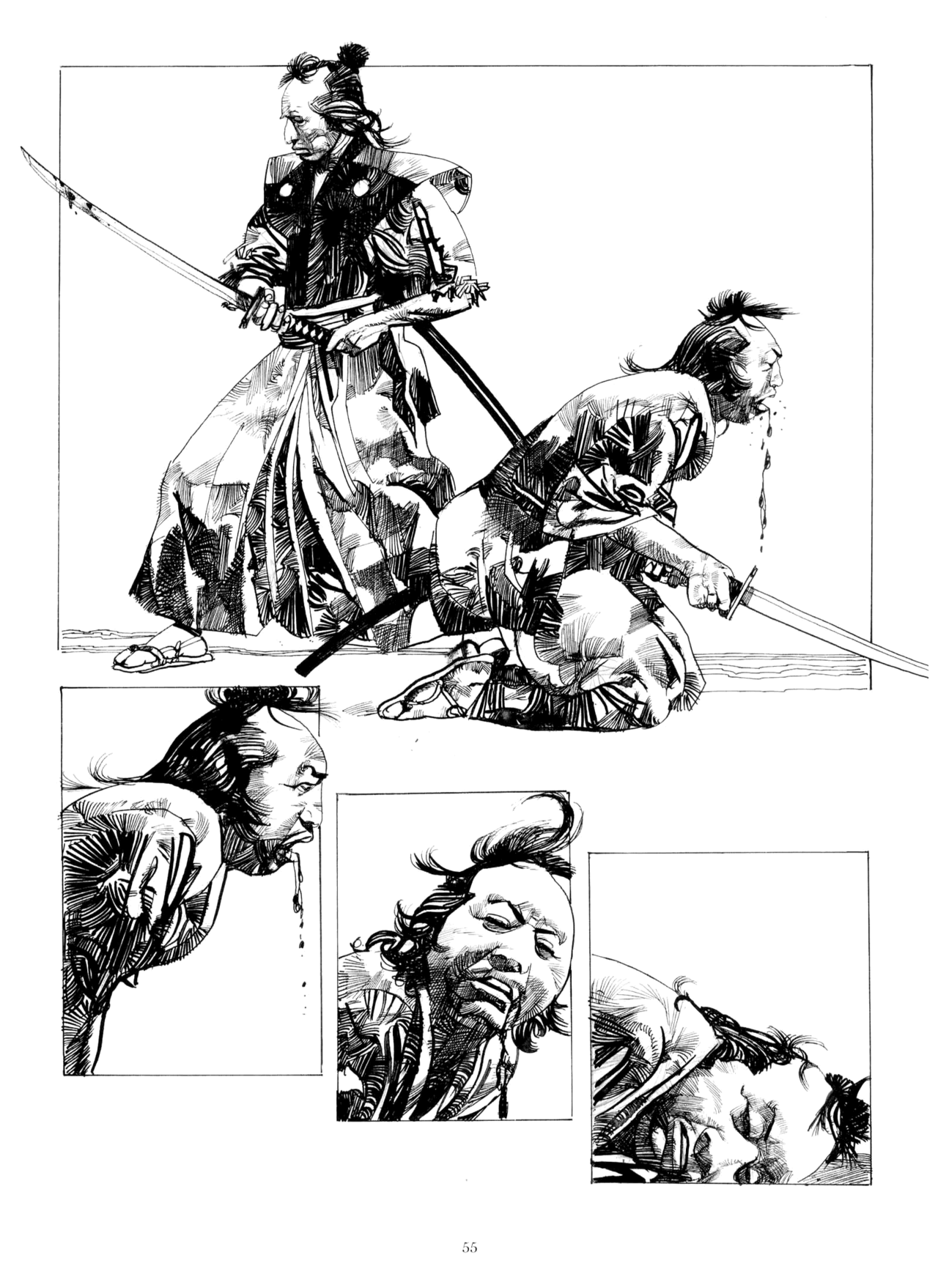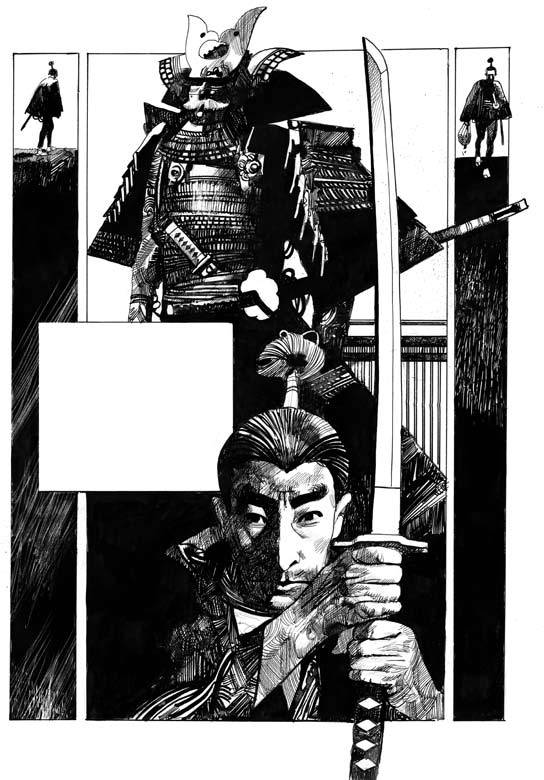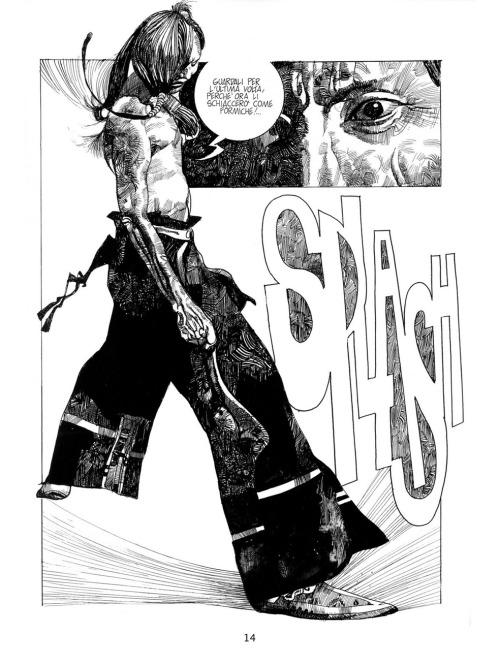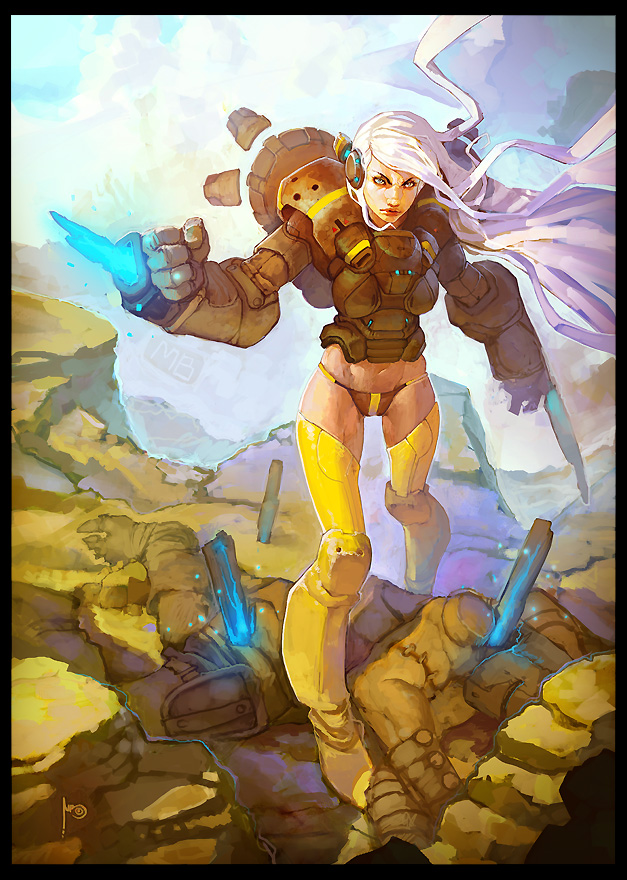This entire post will be some advice on how to start that infamous 'Illustration' career:
How to start your illustration careerPeople often ask me how I got started as an illustrator and if there is any advice I can give them in regards to becoming a professional illustrator. I think having a successful illustration career comes down to the following: Unique Consistent Style, Technical Skills, Marketing, Tracking Work and Attitude. Hopefully, you will find something useful in this article.
Note:
Be sure to check out Illustration Mundo’s Ask a Pro. If you are an illustrator and have a web site with your own domain name make sure you are listed on illustrationmundo.com
Unique Consistent StyleI think having a unique consistent style is probably one of the most important keys to having a successful illustration career.
Read this article: Does an illustrator need a “style”? Read this book: The 22 Immutable Laws of Branding by Al Ries and Laura Ries
Technical SkillsIt’s hard to execute a good idea if you don’t have the technical skills to do it. Having great technical skills not only allows you to realize your ideas, but also will save you a ton of time in the long run because you will be much more efficient and responsive when clients have feedback.
You can search for tutorial videos on Youtube and Vimeo , but in order to save you time I highly recommend
Lynda.com’s video tutorial. You pay a monthly subscription fee which gives you access to all the videos you can watch on all the major programs (photoshop, illustrator, aftereffect, and tons more)
Marketing your illustrations
All your marketing efforts should point back to your web site. Your web site is a place where you can centralize information and understand the success of specific marketing tactics via
Google Analyticsand/or
Statscounter. YOUR WEBSITE IS YOUR MOST VALUABLE MARKETING TACTIC!
What makes a “GOOD WEB SITE”?
Domain Name – First you need a web site with your own domain name.
(example: www.yournamegoeshere.com). Art directors won’t take you seriously if you are pointing to another domain (flickr, tumblr, etc) So if you don’t already have your own domain address you can register your domain name here:
www.godaddy.com www.register.com www.onlydomains.com
Note: All you need is the domain name, don’t buy any extra services, it’s not necessary.
Portfolio Hosting Sites vs. Creating Your Own Web SiteNext, you can use a portfolio hosting service or create your own web site. I recommend using a portfolio hosting service, because they have already takem care a lot of the advice I mention below for creating your own web site (Search Engine Optimization, Usability, Permalinks, Technical Setup, etc)
Recommend Portfolio Hosting Sites
http://www.squarespace.com *There are others, but I think this one is the best!
Creating Your Own Web SiteIf you decide not to use a portfolio hosting company and want to create your own site I recommend hosting it at
www.site5.com. I have used them for years and I am really happy with their service. I host this site and my other sites there
illustrationmundo.com,
letterplayground.com,
proconist.com,
www.alexanderblue.comHere is some advice for creating your own web site:
Keep it simple – clearly explain what service you are providing. The simpler your message is the stronger and more memorable it is.
Usability and Search Engine Optimization – Don’t use FLASH, Frames, Pop-ups, Lightbox, etc … stick with good old fashion XHTML/CSS!
I developed Flash web sites for over 10 years and for an illustrator’s web site my advice is DON’T USE FLASH! 40% of my web traffic comes from Google alone and by using Flash you are making it hard for search engines to index your site and hindering word of mouth marketing because of a number of usability issues. For example, lots of social bookmarking sites (Twitter, Facebook, StumbleUpon,etc) won’t be able to take advantage of specific content on flash sites.
Unique URL – Make sure every piece of art on your site has a unique url … you know, in your browser where you type the web address. Example:
http://www.n8w.com/image/art/urban_outfitters_pillows/ This is why you don’t want to use pop ups, frames, flash, lightbox scripts, etc – art directors often forward urls to editors, so you want to facilitate this process and not hinder it. Here is an example of a unique url that will never change.
-For a category search Google “Hand Lettering” or “Art Licensing Collections”
-For a specific art Google “chalkboard lettering” or “chemiCOOLS”
Update your site frequently – BLOG/RSS Feed/Return Visitors – most
good web hosting companies have an easy way to set up blogs, ask your isp for help or set up one at
tumblr.com,
wordpress.com or
blogger.com. A blog is good because it will keep your site fresh and most clients are return visitors, so you need to give them a reason to return. Also when you blog something the blogs RSS feeds update the search engines.
Google Analytics – In order to understand what works, you need a good stats system to track your marketing efforts. That will give you an idea what the ROI or the return on investment is for a specific marketing tactic. Google’s service is the best I have seen and its free, there is no reason not to use it. So a practical way you might use this information is to find out which thumbnail image from your portfolio is the most clicked on, this image might be a good image to use for your postcard mailer because it’s generating the most interest
https://www.google.com/analytics/. You can create special links to track specific marketing tactics with the
link builder tool. So for example say you pay to be listed in a web site’s directory. Instead of just giving them your web site link you give them the link generated by the
link builder tool which in return will tell you a ton about the hits generated from this site and you can see if the ROI is worth it.
Mailing List – once you make a connection with a client you want to keep it .. it takes more money to get a new customer than to sell to an existing one. People that have hired you are more likely to hire you again and again. There are lots of free emailing list options .. Google it. If you want something for free check out
PHP List. Otherwise, I highly recommend …
http://www.campaignmonitor.com Social Networking – People won’t check your site everyday, but they do check sites like Google+, Facebook, and Twitter everyday so it’s important to have a presences on these site that link back to the work on your site.
Once you have a good, user friendly, search engine friendly site.
Post card mailers are probably the second most cost effective and effective tactic. Lots of times art directors just need to be reminded you exist. That is why I think higher frequency is better than spending a lot of money on one marketing tactic. Don’t put all your eggs in one basket. I would rather spend my money doing 3 postcard mailers a year vs. one big book ad
Cold calls are something you will have to do when starting out. Find magazines, papers, etc that you like or think would be a good fit for you art and contact the art director, ask them if its okay to send them a few examples of your work. I would never send more than 3 pieces .. they will know what your art work is about after seeing 3 pieces.
Attitude
After working as an art director for Microsoft’s Xbox .. I can’t say how important it is to have a positive attitude. Of course talent is crucial .. but talent isn’t the only thing that gets you work. People are people and it’s always nicer to work with someone that is positive and solution oriented. I used to hire tons of external agencies to create web sites and other online promotional material. All the agencies were extremely talented but those that could talk about their work in an exciting way, were easy to work with and accepted feedback well were the ones I hired over and over again.
I’m not saying do anything the client wants with a smile on your face. You were hired because you are an expert in your field .. articulate the decisions you made and get them excited about your ideas .. but it’s also important to stay positive and flexible.
InformationalYou can save yourself a lot of extra work by asking a few questions up front.
First, get the basic information:
Technical Specs – size, bleed, resolution, etc
Important Dates – (Rough Date, Final Date)
If this is the first time working with this person ask them:
Why did you choose me for this project? (I like your concepts, I like your painterly style, your work is cute and works well for teenage girl magazines, your style is rough and dark and works well for this editorial piece on drug abuse, etc)
Which pieces of work do you particularly like and why?(I like the man on the boat cause it’s funny, I like all the texture in the piece you did for Converse, etc)
How did you discover my work?
This will give you a better idea of what the client likes about your work, why they chose you for this particular project and what they expect.
Next, get more information about the job, if it’s a long editorial .. ask them:
What part of the story do they really want emphasize?
Is there anything they want to stay away from?
Do they have any ideas?(This doesn’t necessarily mean to use the idea .. but it will give you a general idea of the path they want to take or what part they think is important/interesting)
Tracking the Work
If you want to make a career out of illustration you will need a good way to keep track of your jobs so you make the deadlines and get paid for your work?
When are roughs due?
When are final sketches due?
Are there any jobs you need to complete?
Are you too busy to take on more work in a specific month?
Who hasn’t paid?
There are a number of ways to keep track of this information. I programmed a little MySQL database application for it .. but you can just as easily track it using a spread sheet or some other existing software. I highly recommend
http://www.google.com/calendar
 http://www.google.com/calendar
http://www.google.com/calendarI have a web page for every job where the client and I can keep track of job’s progress .. this page includes:
the job dates (roughs and final)
contact information
creative direction/job info
pencil sketches
final image
a link for the client to download the final high resolution file ( It is really helpful to use a service where you can store your high resolution files online. This will make it easier for you to keep organize and share your files with the people that need them. I use the service
http://www.dropbox.com )
I created my own solution using php/mysql .. but an easier route might be to do this using a
WordPress or
BLOGGER account.

Creating the Work
Brain storming – get inspired by your environment – I always do my brainstorming and rough sketches outside of my house .. sometimes I take a bus ride with no destination in mind .. sit on a park bench and watch people .. or walk through the city. When you put yourself in new environments you notice things .. you notice subtleties. this is a great way to spark your creativity and start thinking of analogies that might be good for your illustration .. if nothing else it makes your life more interesting.
Here is an article to help with the brainstorming process

Pencil Sketches
Next you can talk to the client and talk about your ideas .. I prefer just to create pencil sketches, because a lot of the time it’s hard to envision what you are talking about .. and my sketches are extremely rough so they don’t take me more than .. about … 60 seconds … I try to sketch very loose and fast so the focus is on the ideas and not on the craftsmanship .. at this stage of the process it’s all about ideas .. and you don’t want a slow drawing hand to slow them from coming out of your teeming brain.
I usually take pictures of my sketches with a digital camera .. its a lot faster than a scanner and because it’s a rough quality isn't so important ..
Next I scare my client with my super rough sketches and explain to them .. to just focus on the concepts .. the final piece won’t look exactly like this .. ;)
The client emails/phones their feedback .. usually something something like .. “sketch 4 is great .. but can we emphasis the blah and maybe reduce or take out blah .. make the cat a dog and make the dog a cat .. etc”
FinalMy process changes a little for each project .. but this will give you a general idea of how I work.
I create my work in a variety of ways .. sometimes I paint with acrylics, draw with sharpie markers, ball point pens,a wacom tablet, paint with india ink, create textures with water color or photocopy machines, etc .. but basically what I am trying to do is create a library of modular pieces I can, later, put into the computer and rearrange the size, composition, color .. etc .. I really like organic textures and loose free flowing lines .. but as an illustrator with quick turn around times I need to be able to make quick changes and easily incorporate client feedback .. so I mix all these really organic elements in a way that is easy to modify/edit via the computer.
To spark my creativity .. I often re-use pieces from my other works .. basically collaging my own stuff .. maybe a head, or a cloud, or a bike wheel, etc .. this helps me quickly create compositions .. but it’s more just for placement .. I then modify or create new pieces specific to the illustrations needs .. at the end you won’t even recognize most of these pieces .. but it really helps me get started .. breaks the ice .. gets the ball rolling .. etc
*Art Advice*Do you really want to be an artist? Or a successful working professional?
Believe it or not there is a difference. I’m not usually a soapbox type guy, I don’t like instructing people, and I think I’m a terrible teacher. But hey, it’s Friday and I’m in a strange mood. So here goes:
I’ve noticed that a good number of my fans happen to be aspiring artists themselves. This is for all you guys. I get asked constantly: “Where should I go to school?” “What classes should I take?” “What should I study for anatomy?” “What pencils and paper do you use?” “Should I be working digitally now instead of traditionally?” “How do I fix my poses? Learn composition? Perspective?” “When am I going to develop my own style?” “Who were your influences?” “Teach me how to draw hands!” The list goes on…
Here’s the deal. All of that stuff *is* important, and it may nudge you in the right direction. A lot of it you will discover for yourself. What works best for one person doesn’t work for another. That’s the beauty of art. It’s personal. It’s discovery. DON’T WORRY ABOUT ALL THAT CRAP!
Instead I’m going to answer the questions that you *SHOULD* be asking, but aren’t. These are things that have only recently occurred to me, after doing this for 20+ years. These things seem so obvious, but apparently they elude a lot of people, because I am surprised at how many ridiculously talented artists are ‘failing’ professionally. Or just unhappy. The beauty of what I’m about to tell you is that it doesn’t matter what field you’re in or what your art style is.
In no particular order:
1) Do what you love. If you are passionate about what you’re doing, it shows. If you’re having fun, it shows. If you’re bored, IT SHOWS. Some guys are able to work on stuff they have zero interest in, and still pull off great work, but I find that when I do this my motivation takes a huge hit. And Motivation is key. Money is not a great motivator. It’s temporary like everything else. And honestly, I’ve gotten paid the most money for some of the shittiest work I have ever done. That may sound awesome, but it’s not. And here’s why…
2) You MUST stay Excited and Motivated. Have you noticed that there are days you can’t draw a god damned thing? And some days you feel like you can draw anything? It’s 4am but you don’t notice because you are in the ZONE. Your hand is racing ahead of your mind and you can do no wrong?! Maybe it’s some new paper you got. Or a new program you’ve been wanting to try out. Or you just found some amazing shit on DeviantArt, or watched some movie that just makes you want to run straight to your board. This relates to the above because while it is possible to involve yourself in projects you aren’t excited about—maybe you need the cash, or think it will look good on your resume, whatever it is—it’s not going to last. You need to stay fresh. Expose yourself to new things. New techniques. You should be getting tired of your own shit on a fairly regular basis. Otherwise other people will.
3) Check your Ego. If you think you’re the shit, you’re already doomed. You may be really, really good at what you do, but there’s someone better. Sorry. There’s always plenty to learn, even for us old dogs. So when I meet young upstarts who have this sense of entitlement, or a know-it-all attitude, I just have to laugh. Some of the biggest egos I’ve ever witnessed were from people who have accomplished the least. Meanwhile, most guys who are supremely talented AND successful, and have EARNED the RIGHT to have an ego and throw their weight around, don’t. Why is that? It’s because…
4) Relationships are important. This may be one of the biggest lessons I’ve had to learn. Early on, I didn’t value my relationships with people. Creatively or otherwise. I felt like I didn’t need anyone’s help and I could figure everything out on my own. Let’s face it, many of us become artists because we are reclusive, social misfits. We’d rather stay inside and draw shit than go outside and play. We like to live inside our own minds. Why not?! It’s awesome in there! And sometimes we don’t want to let other people in. But like I said—you can’t do it alone. I can honestly say that as much as I try to stay current, as much as I try to push my work and draw kick ass shit that will excite people, I would not be where I am today if it weren’t for all the other people I’ve met and learned from along the way. Guys who pulled strings for me. Took risks on me. Believed I was the right guy for the job. You need to manage your relationships. You need to network, and meet people. Drawing comics is still a pretty good place for reclusive types—but if you want to work in big studios—Making games, Films, animation, basically any other type of job on the planet, you’d better start making some connections. Be likeable. Be professional. That doesn’t mean be an opportunistic ladder climber. Fake people lose in the end. Be yourself, but be professional. It’s no secret that when people are hiring, our first instinct is to bring in people we know. It’s human nature. I don’t like unknowns, even if their portfolio is awesome. If we have a mutual connection, if they have great things to say about you, you’re in. If you have AMAZING artwork to show, and I call your last employer and they tell me what a pain in the ass you are to work with, you’re done. Talent and skill only get you so far. I am literally amazed at how often I meet guys that are total assholes and think they are going to get anywhere.
5) Here’s the BIG ONE. The greatest obstacle you will ever have to overcome IS YOURSELF. And the Fear that you are creating in your own head. Stay positive. Stop defeating yourself. There are artists I know that are so damn good they make me pee my pants. I look up to these mofos. I study their shit and I want to draw like them. And they are almost NEVER working on their DREAM project. And—big surprise, they aren’t happy in their job. “Why NOT?! WTF is WRONG WITH YOU?!” is usually my reaction. And the answer is almost always “The market isn’t great right now” “Other stories/games/comics like mine don’t do very well” “The shit that’s hot right now is nothing like mine, It’s just going to fail.” “I’m not sure I’m good enough.” “I need the money.” “Too Risky.” “I tried it before and failed. ” It doesn’t matter what words they use, they are afraid for one reason or another. I know. I’ve been there.
But here’s the deal. YOU NEED TO TAKE RISKS. Guess what? YOU ARE MOST LIKELY GOING TO FAIL. If you want it—REALLY want it, that won’t stop you. You will learn A LOT. My good friend Tim constantly jokes about how I jump out of planes without a parachute and worry about the landing on the way down. You may think that I’m lucky, that it’s easy for me to say because I’m already successful, that I’m in a different situation than you all are. But it’s not true. Risk is risk, no matter what level you’re at. If you’re already successful, you just take even bigger risks. But they never go away. Everything in life is Risk vs. Reward. Not just in your career. LIFE. You’d better get used to it.
I didn’t know what the hell I was doing when I got into comics. I left the #1 selling book at the time ( Uncanny X-men ) to work on Battle Chasers during a time when ‘Conan’ was about the only fantasy comic people knew. And no one was buying it. I wanted to work in games, so I started a game company. I had NO IDEA WTF I was doing. I just wanted it, really bad. We tanked. It failed. No big surprise. But the people I worked with got hired elsewhere and rehired me. I started ANOTHER game Company. We had 4 people and a dream, and some publishers wouldn’t even meet with us, because their ‘next gen console’ teams had 90+ people on them. I literally got hung up on. “Stick to handheld games, it’s smaller, maybe you can handle that…” one MAJOR publisher told us. I don’t blame them. But we didn’t let it stop us. Thank god we didn’t listen to them. Vigil was born. Darksiders happened, AND we got to make a sequel. It stands shoulder to shoulder with the best games in the industry, and the most elite and experienced game dev studios in the world. How is that possible?!!! Hardly any of us had even worked on a console game before. I’ll be honest, I was thinking we would fail the whole time. I just didn’t care. If I had to play the odds on this one, I’d bet against us.
Why am I telling you all this shit? This is not me patting myself on the back. It’s just stuff that has somehow only dawned on me recently when it’s been staring me in the face for so long. I feel like I need to wake you guys up!!! I’ve been limiting myself. I’ve gotten afraid. I’ve taken less risks. I saw my career going places I didn’t want to go. I wasn’t happy and I wasn’t excited. And I’ve realized, that all that stuff I just talked about is the reason I am where I am today. Not because I have a manga style, or I draw cool hands, or there’s energy in my drawings, or all the other things people rattle off to me. There are other guys that do all that same shit, and do it better. And amazingly, those same guys constantly tell me “Man, I wish I could do what you are doing.” “SO DO IT!!!!!” PLEASE listen to me—because I want you guys to make it. I want to look to one of you people for inspiration some day when it’s 2am and I need to keep drawing. Stop worrying about all the other stuff—the pencils, the paper, the anatomy, all that shit. It will only get you so far. You’ve already got most of what you need. I hope this helps some people. From the bottom of my heart, thank you for all the support over the years. You are all one of the greatest motivating forces in my life and my career. Sappy but true. Ok, let’s go draw some shit!!!
TAXES FOR FREELANCERS, 101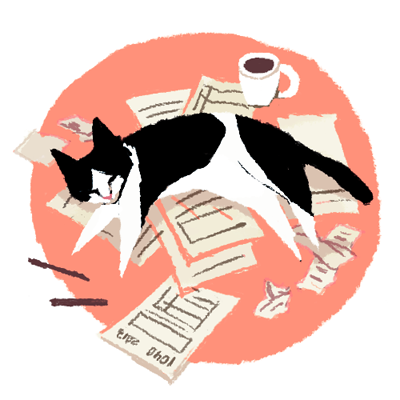
In the past, I’ve gotten some questions about the business of illustration & about how taxes work. Filing taxes is a bummer, but it sucks even more when you have no idea what you’re doing. After progressing from Completely Clueless to Somewhat Experienced* during the past 5 years of doing my own taxes, I thought i’d write (& illustrate!) a generalized rundown. Here’s hoping it might provide some insight for the curious!
*This info is from my own experience and I am by NO means a tax professional! I’m simplifying a lot of the info here, so please don’t take my word as law—check out the specifics on the IRS website instead.
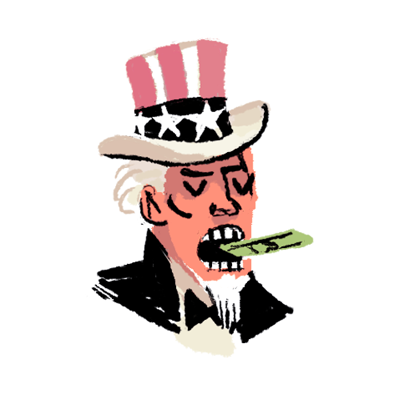
First, the basics:
If you earn an income, you have to pay income taxes, and Uncle Sam has a “pay as you go” system. If you want to avoid a pricey penalty, you are expected to pay taxes throughout the year as you earn income, not all at once when you file your income tax return. There are 2 ways this happens:
1. For people who receive regular paychecks from an employer, your employer will withhold a certain amount from your paycheck to pay for federal (and state) income taxes—you fill out a W-4 form when you’re hired, which determines how much they withhold for you. Easy-peasy!
2. If you’re a freelancer, you don’t have a regular paycheck or a regular employer to withhold your taxes for you, so you have to pay quarterlyEstimated Taxes yourself. Estimated taxes cover your income tax and self employment tax*, for both the federal gov’t and your state gov’t (if applicable).
*Yes—as a freelancer, you not only have to pay income tax, but you also pay self employment tax! (basically, a tax that goes to Social Security/Medicare)
I’m just going to focus on federal estimated taxes first:
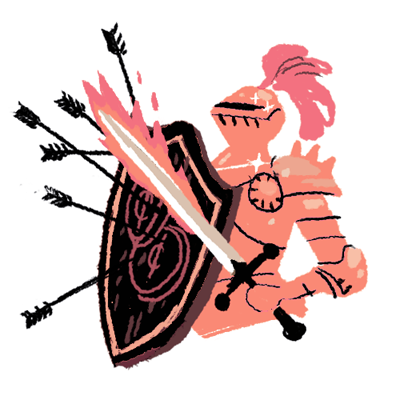
If you’re a freelancer, the trick is to make sure you pay enough in estimated taxes throughout the year to avoid the underpayment penalty.
You will avoid the penalty if you:
Owe less than $1000 in taxes after subtracting withholding and credits
OR
(A)Have paid at least 90% of the tax amount owed for the current year, or (B) have paid at least 100% of the tax shown on last year’s return — whichever is smaller.
So let’s break down these scenarios a bit:
If you’re a student just graduating from school and you haven’t done many freelance jobs (i.e. probably making less than $8,000 in taxable income from freelance), it’s likely that you don’t have to pay estimated taxes, because you’ll probably owe less than $1000 in federal taxes from your freelance work. So don’t sweat it!
If it does look like you will owe $1000 or more in taxes, you have 2 choices for calculating how much to pay in estimated taxes—the aforementioned (A) or (B).
(A) Make sure you pay at least 90% of the tax amount that will be owed for the current year.
OR
(B) Make sure you pay at least 100% of the tax shown on last year’s return.
There’s an
estimated tax worksheet that you can use to help figure out either one.
Since my freelance income fluctuates and I’m lazy enough that I don’t like trying to predict how much tax I will owe for the upcoming year (and adjust quarterly payments if needed), I prefer to just use option (B).

That means that I can just pay an equal amount each quarter, and make sure all 4 estimated tax payments add up to the tax amount I paid for last year’s return (or more).
So, for instance, if I owed $7000 total in federal taxes for 2012, I won’t be penalized for underpayment if I pay at least $1750 each quarter ($7000 total) for my 2013 federal estimated taxes—regardless of whether I owe more taxes in 2013 or not. If I earned a higher income in 2013 than in 2012 and didn’t pay enough estimated taxes to cover it all, I’d still have to pay the difference at tax time, but at least I wouldn’t have to pay the underpayment penalty!
Not too difficult, so long as you have enough in your bank account, but tricky to figure out at first!
All of this information also generally applies to state estimated tax payments, though the specific numbers and percentages can change and a few states don’t charge income tax at all. In most states, you have to pay a state income tax as well as a federal income tax, so I pay quarterly estimated tax payments to the federal government, as well as quarterly estimated tax payments to Maryland, my state of residence.
Federal estimated taxes are handled on
Federal Form 1040-ES, but you can fill out the form and schedule your payments online for free at
https://www.eftps.gov/eftps/Your state will also likely have a free online tax system you can use.
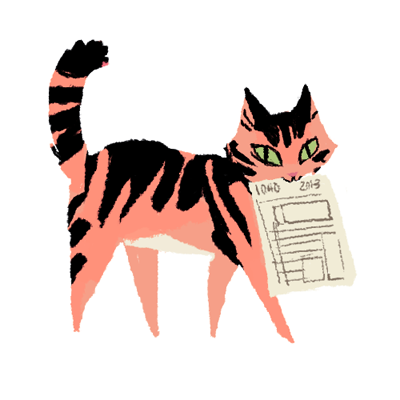
Some tax filing methods:
-Just use a tax professional! Seriously, especially if this is new to you and you don’t have any outside help. I know plenty of professional illustrators that use one. Better than messing things up and getting in trouble with the IRS.
-Use online tax software that helps to walk you through the tax experience and will do all the calculations for you, like TurboTax, TaxAct, etc. (I use TaxAct) They usually have a free version for your federal returns well as pay options, (which may include your state return as well). They will also let you schedule your federal estimated taxes, which I take advantage of. I recommend having a tax-savvy friend or relative you can call if you get stuck! I owe huge debts of gratitude to my own tax-savvy relatives that patiently answered questions & put me on the right track.
OR
-Print out all the pertinent tax forms and worksheets, start to fill them out by hand, alone in your paper-strewn room, and then jump out the window in wild frustration when you can’t figure out all the jargon and your math skills aren’t as good as they used to be.

(not recommended)
“Happy” taxing, everyone!
========================================================
Other things that I can't recommend enough:
A)
Keep your internet presence high.
-- Keep a blog, tumblr, twitter, etc.
B)
Keep in contact as often as you can.
-- You never know when those connections you made a day ago, a month ago, a year ago, will come in handy. Always try to treat others as you would want to be treated. Kindness and honesty goes a long way in this industry.
C)
Use events like collabodraw or cghub challneges to gain that infamous XP.
-- Even though you won't be getting paid, again it's all about exposure. The more you show your work the more you'll get work. Plus it always pays off to practice more than less.
"Blanche"
"Shard Assassin"
"First Flight"





















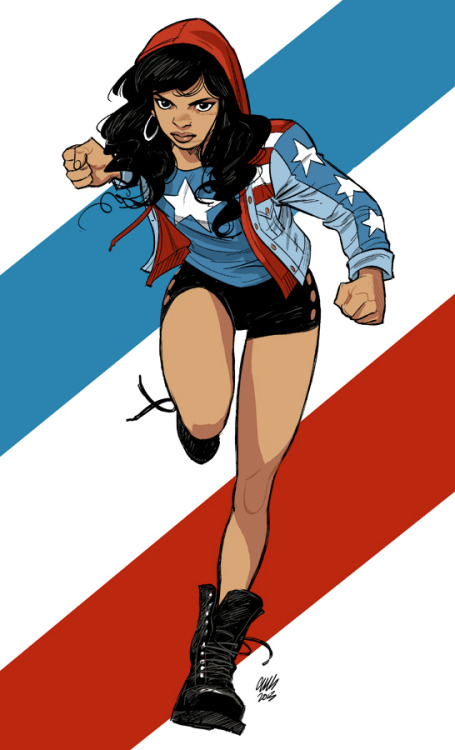

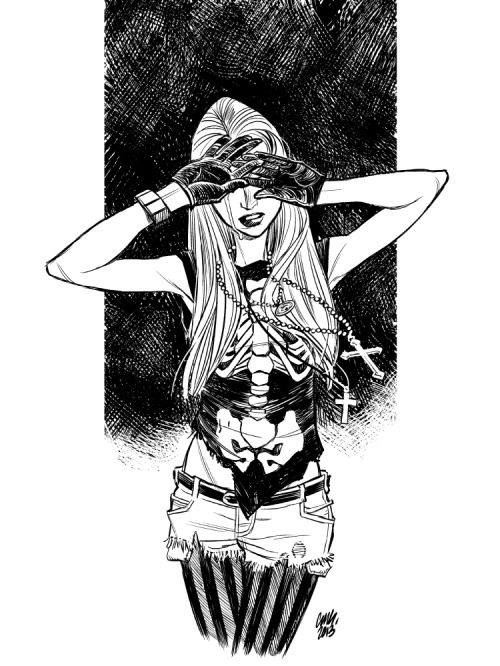










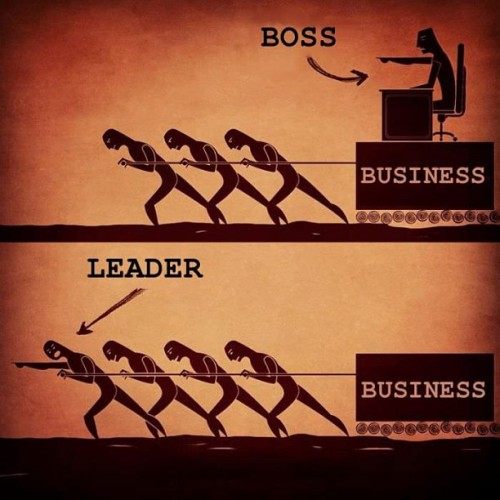





 First, the basics:
First, the basics: If you’re a freelancer, the trick is to make sure you pay enough in estimated taxes throughout the year to avoid the underpayment penalty.
If you’re a freelancer, the trick is to make sure you pay enough in estimated taxes throughout the year to avoid the underpayment penalty. That means that I can just pay an equal amount each quarter, and make sure all 4 estimated tax payments add up to the tax amount I paid for last year’s return (or more).
That means that I can just pay an equal amount each quarter, and make sure all 4 estimated tax payments add up to the tax amount I paid for last year’s return (or more). Some tax filing methods:
Some tax filing methods:
